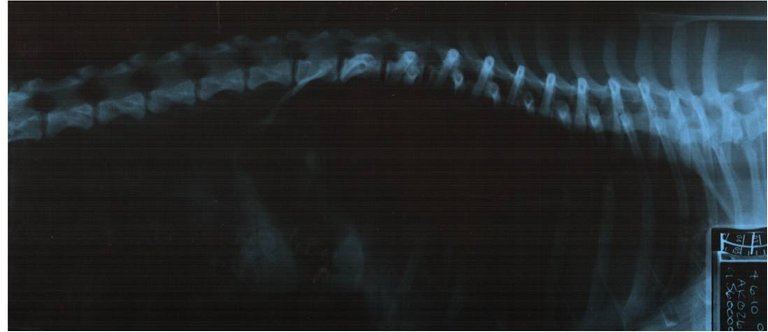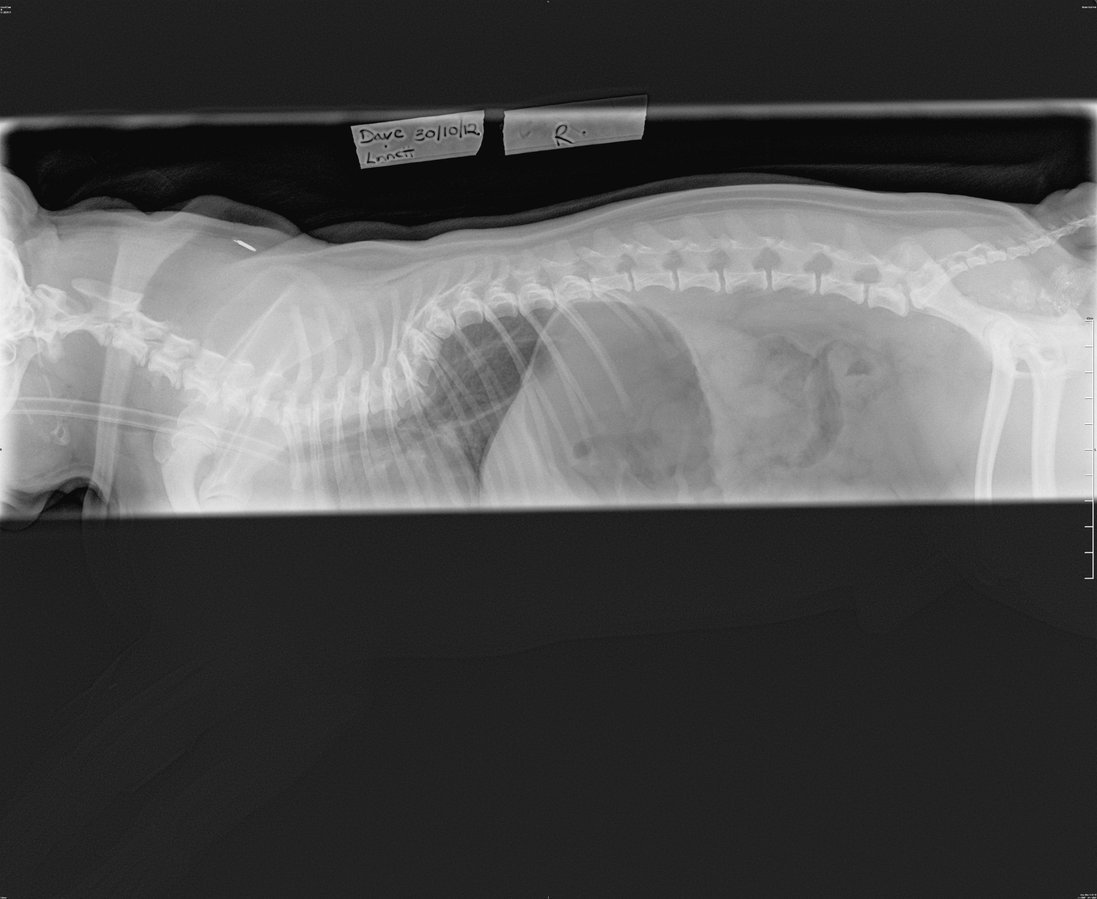CONQUELL PUG DOGS
No dog can be a happy dog if it is not a healthy dog.
At the present time there is no recommended or required health testing for Pugs, however having undertaken health testing in GSDs for so many years I feel this is not the best approach. I also hope that in the very near future reccommendations and requirements will be set for our fantastic breed.
We sadly hear the statement "not in my lines" when breeders refer to health issues, however this statement is not accurate as these breeders are those who do not test. Those who put the breed's interest first will recognise that we are only conservators of the breed and as such need to do more to protect their future.
Hemivertebrae
Vertebrae are the bones which link together to form the spine or backbone. Running through the spine is the highly sensitive and delicate spinal cord. When the spine is "normal" then the vertebrae are symmetrical, cylindrical in form allowing the cord to run through in straight line.
The xray below is of a pug who is clear from evidence of Hemivertebrae.
When an animal is affected by hemivertebra the vetebrae have formed incorrectly and often appear wedge shaped, and do not link together in the normal form. This means that the spinal cord is no longer straight but contorted or squashed in some way. Although hemivertebrae is an abnomality present from birth, it is may not become a problem till a puppy is 6 months or older, some can go through life never showing symptoms.
As a puppy grows some of the early signs resulting from the miss shaped vertebrae include:
Pain
Bad movement or wobbliness (ataxia) in the hind legs
Loss of leg function and sometimes incontinence.
Sometimes dogs in chronic pain will not cry or yelp.
As the symptoms develop the dog may become paralysed.
This is an X ray of an affected pug puppy who is 7.5 months old.

